The Biggest Myth In Online Retail
Succeeding at online retail isn't always about deep discounts -- even during the uber-competitive holiday season. Columnist David Rekuc discusses nine other ways you can draw customers in and make it easy for them to say yes.

Myth: Selling online means competing on price.
As the marketing director at an ecommerce agency, I hear some variation of this statement from current and prospective clients. Every. Single. Day.
Whether they’re getting their misinformation from competitors or research on the Web, it seems many online retailers have convinced themselves that the only way to succeed is to succumb to razor-thin margins.
This is especially true when they start planning for the holiday season, a time synonymous with incredible promotions and steep competition.
The truth is, every purchase decision comes down to a perceived risk versus reward. The best online retailers focus on mitigating consumer doubts while enticing shoppers with additional incentives. Sometimes that means low prices and deep discounts, but not always.
Read on for nine more ways you can lower your customers’ perceived risk and/or increase the perceived reward of a given transaction.
Reduce Risk
If you want to avoid dropping the retail price of your products, you’re asking shoppers to pay a premium for doing business with you. For this strategy to work, you’ve got to give customers a reason to trust you.
1) Create a guarantee worth talking about.
Online customers must accept circumstances that aren’t typically present when they shop in a store. They worry about the quality of the items they will receive, that clothing won’t fit, that electronics won’t be compatible with their devices, that they won’t like colors and textures in person. The list goes on.
The single best way to alleviate these concerns is to offer a killer return policy.
Online retailer Proper Cloth offers custom-made dress shirts for men. Naturally, custom-made dress shirts don’t come cheap, and when a customer commits to purchasing a high-end item over something mass-produced, they want to be totally sure they’re in good hands.
So how does Proper Cloth assure shoppers?

Huh. “No matter what.” That’s the final sentence on the site’s guarantee, which they promote pretty extensively.
Here’s another example from Amazon-owned ecommerce success story Zappos.com:
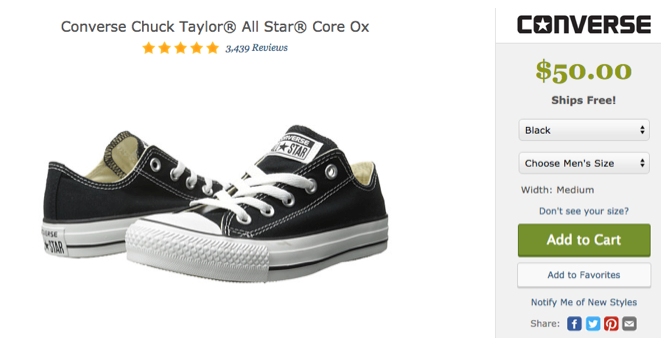
Could you find these shoes somewhere cheaper online? Absolutely.
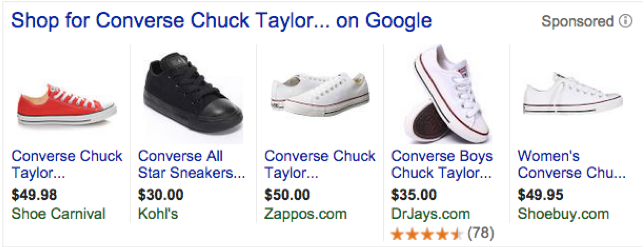
But they won’t come with the famous Zappos 365-day free return policy. Zappos customers are among some of the most loyal online, largely due to the site’s exceptional customer service policies.
2) Offer a free trial.
In some ways, a strong return policy gives shoppers a way to try out a product before fully committing to ownership. But what if you could take this idea a step further and offer a free trial?
Almost 31% of shoppers say they shop in a store because they want the opportunity to see or feel an item in person. Give them that opportunity!
This won’t work for every category, but let’s look at a couple of innovative ecommerce brands that have perfected the art of the freebie.
Online eyeglass merchant Warby Parker lets shoppers try on five pairs of glasses with zero payment:
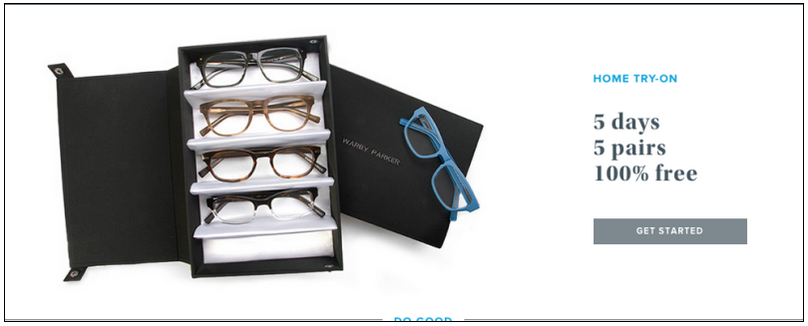
Of course, Warby Parker takes credit card information as collateral, but if shoppers follow the (relatively simple) rules, they aren’t charged unless they choose to move forward with a purchase.
Free trials work especially well with products that need replenishment (Food is a great example). Blue Apron — recently valued at $2 billion — sends subscribers pre-portioned ingredients for home-cooked meals.
The site currently offers a referral program with an incentive of two free meals for new users. Because this incentive is part of a referral program, it also gives an air of exclusivity to the offer and encourages word-of-mouth interaction:

3) Establish credibility with third-party endorsements.
At this point, most online shoppers are savvy enough to know that reviews can be edited, screened or downright faked. For this reason, they put more trust in independent review sites that can’t be as easily manipulated, especially ones with an established reputation for transparency.
Proper Cloth, the same site with the “No matter what” guarantee, displays this image prominently on its home page:

In place of a stream of questionable testimonials, Proper Cloth calls out its enviable status on Google and Yelp to instill confidence in new shoppers.
By highlighting third-party reviews in tandem with the site’s guarantee, prospective shoppers know Proper Cloth’s commitment to customer service isn’t just smoke and mirrors. Otherwise, current customers wouldn’t be singing its praises.
4) Seek out in-depth, transparent product reviews.
Establishing merchant-level trust is important, but the same goes for each product on your site. This seems so universally understood in the Amazon ecosystem, but it’s so consistently forgotten in direct selling on ecommerce sites.
Here’s a great example: Amazon’s top review for the GoPro Hero4 Silver has 1,117 words. That’s longer than most articles on the Web. Plus, there are 814 more reviews and 306 answered questions.

Compelling product copy and imagery is important, but ultimately, shoppers are more willing to trust fellow consumers. Use this to your advantage by encouraging helpful (and honest) feedback.
Fashion retailer ModCloth has built an incredible community of loyal female shoppers, and the site invites users to post pictures of themselves wearing ModCloth products. These images are then featured on each product page so users can see how an item looks on real people.
Though they aren’t technically labeled as reviews, these user-generated images make it easy for shoppers to commit.
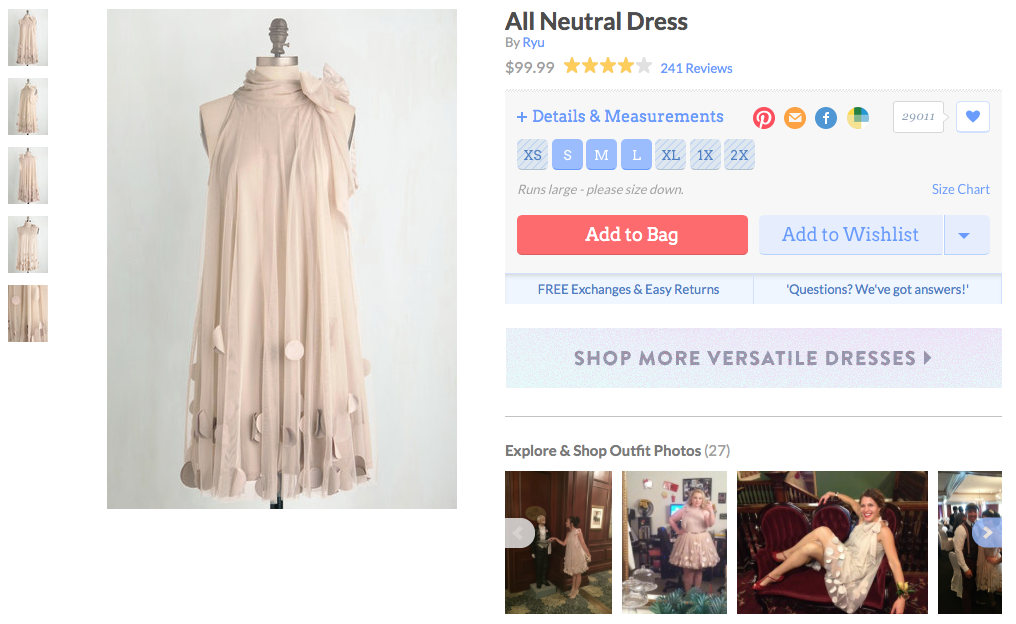
You can incentivize shoppers to offer their reviews with giveaway contests and discount codes, but make sure you’re not penalizing anyone who posts a less-than-favorable review.
5) Make users feel secure.
In my experience, site security and privacy concerns are fairly Boolean — either customers are satisfied that your site is on the up-and-up or they’re worried their personal information is at risk. And once they get a whiff of uncertainty, they’re gone.
You can give shoppers piece of mind with security badges and a stated privacy policy, but clean Web design and seamless user experience are just as important for establishing a sense of professionalism and, ultimately, cutting down on shopping cart abandonment.
Increase Reward
So far, we’ve focused on addressing any qualms a customer might have about completing a transaction without lowering the price. There are also several ways to make a purchase seem even more attractive to seal the deal.
Truthfully, most of these tips are as old as the hills. The trick is adapting them to today’s ecommerce environment. Here are a few ways (and examples) to increase the value of what you’re selling:
6) Offer a free gift with purchase.

But wait — there’s more! The infomercial ending is the classic example of a “free gift with purchase” strategy.
The beauty industry also frequently offers free gifts with purchase to justify its high price points. And in many cases, the free gift is actually a free sample to encourage future purchases. Win-win!
A quick search at Bloomingdales.com for “Yves Saint Laurent” results in 118 products, with a “Bonus Offer” attached to every single choice:
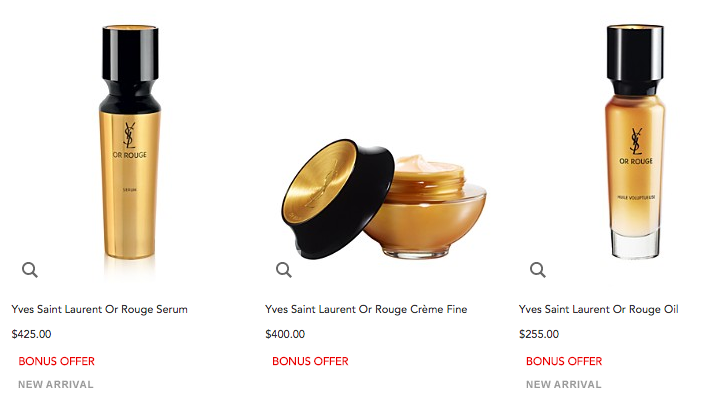
A closer look reveals the offer’s stipulations, one of which evokes a sense of scarcity (“While supplies last”). The experience may feel more sophisticated, but Bloomingdale’s (and likely, YSL) is using the same principle as an infomercial host that throws in additional items if you “Call now!”

You probably won’t see Yves Saint Laurent on sale at Bloomingdales — or anywhere else, for that matter. Instead, like other luxury brands, YSL is increasing the value of their products with a free gift to tip the risk vs. reward ratio in their favor.
7) Create exclusivity.
The video game industry also offers free gifts when they can’t compete on price. When a big game comes out, it’s going to sell for $59.99 everywhere. No one can get away with selling it for more, and no one is going to fight the losing game of dropping their price.
So, what do retailers do? They scramble to strike a deal with the video game publisher to offer some kind of a gift with purchase. But they often take it a step further by fighting for some exclusive in-game feature that can only be accessed by buying from them.
Here are two ads from GameStop and Walmart for the newest Batman game; in both ads, price isn’t even a factor:
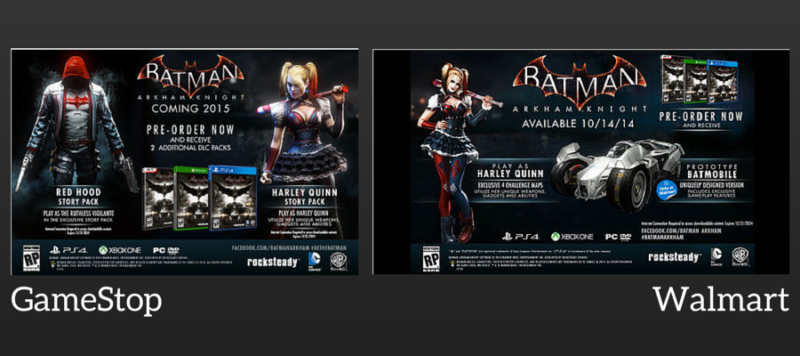
(For the record, there is a typo on the release date for Walmart’s ad.)
But exclusives don’t have to be on a product-by-product basis, and they don’t have to be restricted to big box retailers. Pure-play online retailer Diamond Candles only sells its unique products on its own ecommerce site. You won’t find them on Amazon. Or Target. Or Nordstrom.
This allows the company to control every aspect of the customer experience and makes it unnecessary for it to compete on price.

Founder Justin Winter gave an excellent interview on the Ecommerce Influence podcast if you’re interested in learning more about the brand.
8) Help customers get more out of your products.
If you handed a caveman a compass and didn’t teach him how to use it, he’d be unlikely to get any value out of it. It only takes about 30 seconds of education to take a compass from a useless hunk of metal to an invention that changed the way we navigate the globe.
The takeaway: Great products solve problems. But they don’t have to do it on their own.
Right Channel Radios from ecommerce expert Andrew Youderian offers an entire “learning center” that helps shoppers with product selection, installation and troubleshooting. This sort of content isn’t easy to produce, but in addition to creating value, it can also help support SEO.
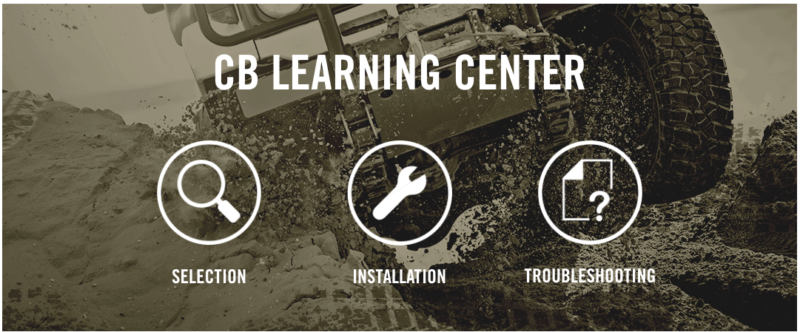
Niche brands are usually a better fit for this strategy than retailers, but there are exceptions. If you want buyers to be excited about your product, tell a friend or rate it well, you must help them get more out of the product itself.
9) Sell a lifestyle.
In my opinion, this is the hardest and least tangible way to increase the perceived value of your products, but it’s also the most rewarding if you can pull it off. My favorite example is Chubbies Shorts.

These guys sell short shorts for men starting around $49.50. The company’s followers idolize them because they have a relatable brand with a distinct voice.
They once sent out 1,000 packages of Big League Chew to past customers just for fun. Customers then tweeted photos of the gum to Chubbies and their friends. Truthfully, you can’t buy that sort of promotion, and you have to be pretty gutsy to go after it.
Many retailers use Pinterest to promote a lifestyle that makes sense with their brand and drive traffic back to their site. If you can create a well-liked brand persona in the mind of your customer, then he or she is yours to lose.
Final Thoughts
Of course, there are exceptions to every rule. When is it OK to go to war on price?
In short, when you can actually win.
Usually this requires some kind of competitive advantage. The best example is the viral ecommerce sensation Dollar Shave Club.

The incumbent distribution model for razors was a brand sell to a distributor. Distributor sells to the drug store, and drug store sells to the consumer. Dollar Shave Club decided to leapfrog those distribution partners and go right to the consumer with a cheap razor subscription service. And it won big.

So big that to combat Dollar Shave Club’s success, Gillette launched a similar program called Gillette Shave Club (Nice name).
However, because Gillette must obey the pricing rules of its established distribution channels or risk ticking off big-box buyers, it simply can’t compete with Dollar Shave Club’s offer. But in most cases, this sort of advantage just doesn’t exist.
To be clear, price is a key factor in almost every purchase decision. But the total value of your offer is what consumers will evaluate, and price is just one piece of the puzzle.
If you take a moment to visit their sites, you’ll notice many of the online retailers on the list are using more than one of the techniques I’ve described above. By simultaneously increasing perceived reward while decreasing their risk, you make it easy for your customers to say yes — without resorting to lowering your price.
Contributing authors are invited to create content for MarTech and are chosen for their expertise and contribution to the search community. Our contributors work under the oversight of the editorial staff and contributions are checked for quality and relevance to our readers. MarTech is owned by Semrush. Contributor was not asked to make any direct or indirect mentions of Semrush. The opinions they express are their own.
Related stories